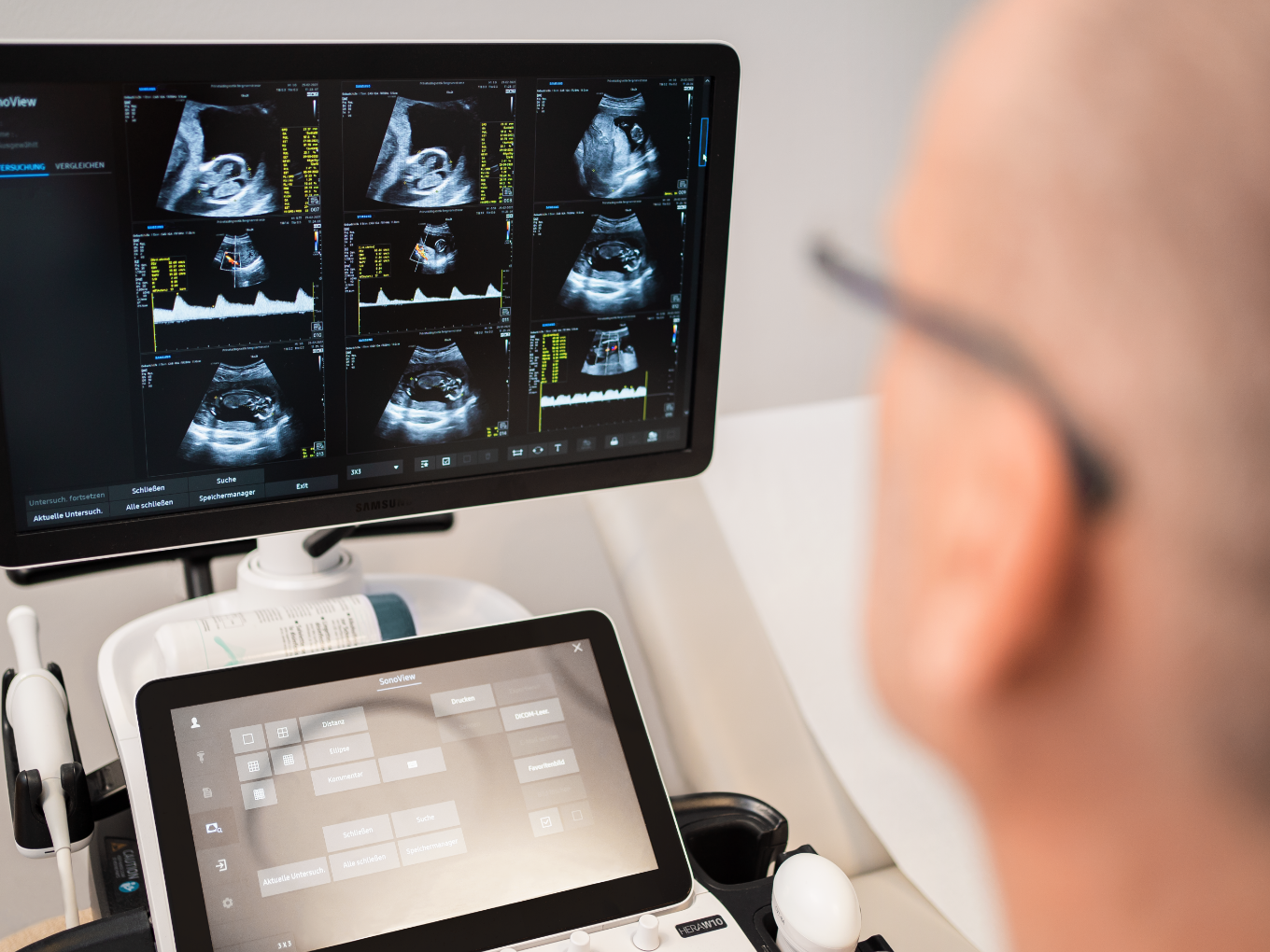
Services
Ultrasound is the most important examination method for examining an unborn child. We offer different examination methods depending on the gestational age and any respective questions that may arise. We are guided by your individual wishes.
First trimester anatomy scan with first trimester screening
With this examination in the 13th or 14th week of pregnancy, a large percentage of severe malformations can be excluded. In addition, the risk of trisomy can be calculated and the healthy development of the placenta can be monitored. Only at this stage in the pregnancy can the development of the placenta be positively influenced with medication if necessary
Second trimester anatomy scan
With the help of this examination in the 21st - 23rd week of pregnancy, about 80% of severe malformations can be ruled out. It can also be determined whether the child is well nourished and whether the placenta and umbilical cord are positioned in such a way that an attempt at a normal delivery is possible without danger.
Chorionic villus sampling or placenta puncture
The removal of the smallest parts of the placenta allows the genetic information of the unborn child to be examined, allowing for the exclusion of diseases that may be suspected via ultrasound but cannot be determined with certainty. Chorionic villus sampling can be performed earlier than amniocentesis.
Amniocentesis or amniotic fluid puncture
The collection of amniotic fluid allows for the examination of the unborn child’s genetic information and the exclusion of diseases that can be suspected with ultrasound but cannot be determined with certainty.
Non-invasive prenatal test (NIPT)
NIPT refers to a blood test of the mother that can exclude trisomy 21 (Down syndrome) and trisomies 13 and 18 with a high, but not 100% certainty.

